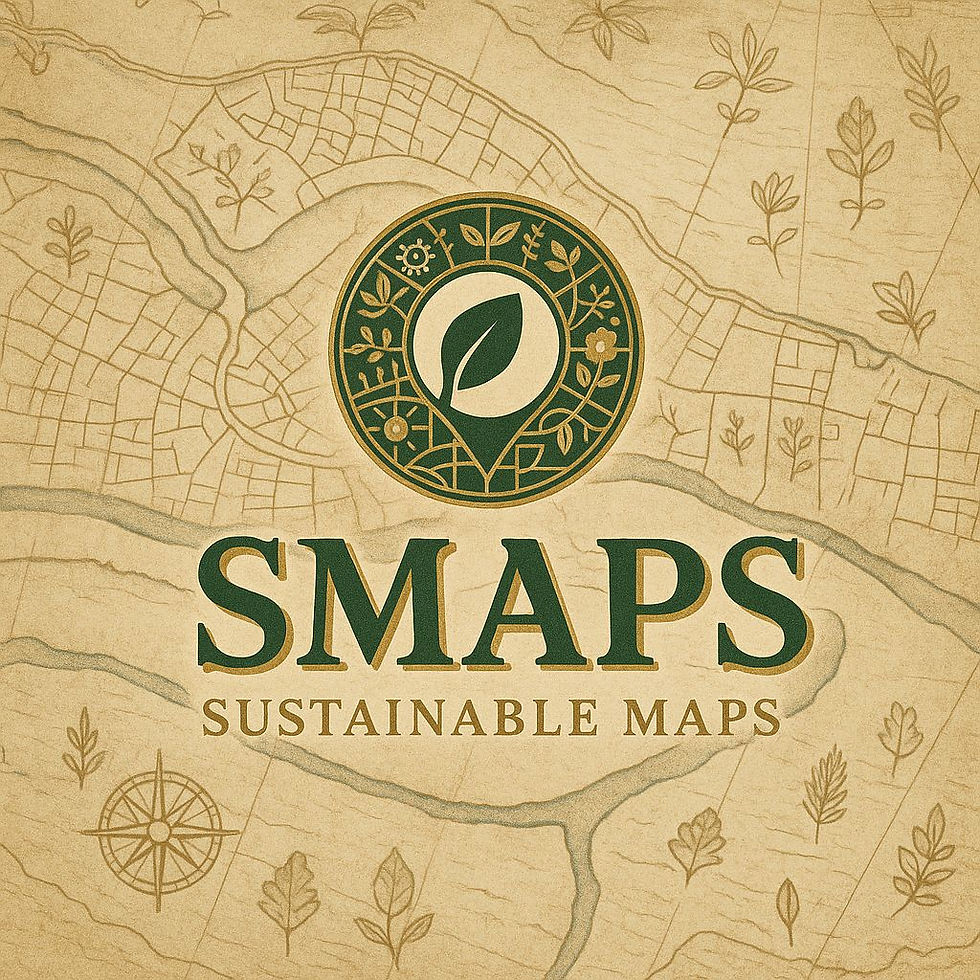The New European Bauhaus: The Future of Sustainable Urban Development
- marisads2509
- May 4, 2021
- 4 min read
Updated: Sep 23, 2021
The New European Bauhaus is a creative and interdisciplinary project by the European Commission to design the future way of sustainable living. The project is inspired by the Staatliches Bauhaus from the beginning of the 20th Century in Germany and includes three core values: ‘Aesthetics. Sustainability. Inclusiveness’. The goal of the project is to bring together art, culture, social inclusion, science, and technology within the European Green Deal and consequently create a social narrative and common culture within the sustainability strategy of the European Union. In this article, we explain how the New European Bauhaus was created from the principles of the Staatliches Bauhaus and the goal for sustainable urban development.
The Staatliches Bauhaus: Simplistic, Pragmatic, Mass-Produced

The original Bauhaus was called the ‘Staatliches Bauhaus’ and was founded by Walter Gropius in Weimer, Germany, in 1919. The goal of the project was to unify mass production with individual artistic vision and consequently combine aesthetics and everyday function in design. The Bauhaus manifesto stated that “the ultimate aim of all creative activity is a building”.
The Bauhaus style was influenced by increased liberalism in Germany after the Second World War which allowed radical experimentation in the arts. The style was simplistic, pragmatic, and lacked ornamentation. It was characterised by geometric shapes, rounded corners and walls, metal pipes, and the use of glass and concrete. The Bauhaus school focused on the inclusion of all arts and crafts in the curriculum, including painting, typography, architecture, design, furniture-making, theatre, stained glass, woodwork, etc. Additionally, students were encouraged to produce designs that were mass-produced but still included individual craftsmanship, beauty, and useability.
The School moved twice, first to Dessau and later to Berlin, and was led by three architect-directors until its closure in 1933 under pressure from the Nazi regime. After its closure, the staff emigrated all around the world and influenced modern design, modernist architecture and art, design and architectural education, graphic design, interior design, and typography, in Western Europe, North America, and Israel.
The New European Bauhaus: Beautiful. Sustainable. Together.

With the New European Bauhaus, the European Commission hopes to create a new international social movement and renovation wave, going beyond the borders of the Union, after the example of the Staatliches Bauhaus. The project will focus on a grassroots approach, collecting ideas from public initiatives and the Commission will already reward 5 pilot projects in October of 2021 with financial funding. The initiatives need to connect innovative ideas with everyday solutions that fit the macro-vision of the New European Bauhaus.
The New European Bauhaus first and foremost focuses on creating functional, affordable, and beautiful buildings and cities. With more than 75% of European living in one of the more than 900 European cities, these are important centers of democratic participation and international collaboration. Sustainable urban development is therefore essential for the implementation of the European Green Deal. One of the most important aspects is therefore to transform the built environment from a carbon source to a carbon sink.
To make the European Green Deal successful and make European cities sustainable, there is a need for transformation to a circular building economy and a transition to sustainable and recyclable materials in architecture and design. The New European Bauhaus, therefore, aims to create a renovation wave and a change in building practices. One way to do this is to use local material and non-skilled people to make construction more affordable. Additionally, projects need to look back at old building practices and rediscover old knowledge, for example, the use of bamboo as a way to fortify concrete. There also needs to be a focus on area neutrality in order to build denser and re-use spaces instead of expanding the area of existing cities. Lastly, there is a need to focus on scaling opportunities and best practices.
The New European Bauhaus project also focuses on participation, inclusion, and interdisciplinarity. The project wants to include unusual voices and collaborate between the disciplines of architecture, art, design, technology, innovation, and business to change our way of thinking and living. The original Bauhaus focused heavily on teaching, learning, and collaboration. These elements will need to be included in the New European Bauhaus in order to improve democratisation and inclusion of youth and citizens in the project.
"The new beauty is sustainable" - Gina Gylver
The connection between the New European Bauhaus and the European Green Deal offers a unique chance to create a symbiosis between society and the environment. We need to accept our place of co-existence within nature and our responsibility towards the environment and future generations. Nature-based solutions and natural materials need to become an integral part of the Bauhaus movement. According to Gina Gylver, Norwegian climate activist, “the new beauty is sustainable”. Innovation and digitalization will bring this movement opportunities to create a sustainable future for European cities. And intergenerational dialogue and interdisciplinary collaboration will empower people to co-create living spaces.
Author: Marisa De Schepper
If you are interested in contributing or proposing a project to the New European Bauhaus project, you can find more information on the website of the European Commission:
Sources & More Info
Follow these links for more information on the Staatliches Bauhaus and the New European Bauhaus!



Comments